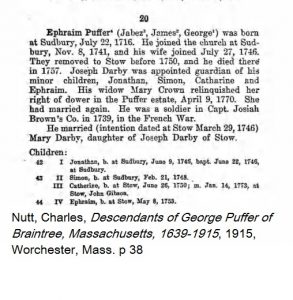 It’s a rush to judgement to say that “old genealogies are worthless.”
It’s a rush to judgement to say that “old genealogies are worthless.”
When analyzing information from pre-1900 genealogies, it’s advised to keep in mind the likely way that information from the book was obtained. Generally speaking, genealogical facts in these publications came from one of three places:
- other published books
- correspondence with living family members
- original civil and church records
The accuracy of what is taken from another book rests on how accurate the original compiler was and how accurately the copier copied the information. Photocopiers and scanners were not available. If the book you are looking at contains no information about where information was obtained from, it can be difficult to know what was copied from other compilations and what was not. The problem is compounded if more than one previously publication was used. But those publications did not obtain all their information from the previously printed page.
Living family members likely supplied information for some of these pre-1900 genealogies as well. They might have copied information from family bibles, copied it from other published genealogies they may have had, or shared what they knew from first hand knowledge. Some books will indicate when family members supplied information. Many do not. The time frame matters. A genealogy published in 1885 may easily contain information submitted from someone born in 1835–some of which they knew first hand. The difficulty rests in knowing what was submitted by someone who had reasonable knowledge of the event and what was copied from an unknown book.
And some of these publications included information obtained from official civil or church records. Sometimes the date, location, and type of event is suggestive of where the information was obtained (eg. “Elijah’s will was admitted to probate in Middlesex County, on 1 October 1792.”). Some authors were more diligent in obtaining information from original sources than were others. The user of these publications also needs to remember that during the time period these publications were published, information obtained from original records required someone to actually see the actual record and record that information (either an abstract, extract, or a transcription) by hand. That was a limitation that is not faced by researchers today.
Any published reference can contain errors.
Just because some of these books contain mistakes that have been repeated numerous times and others make claims to ancestors stretching back to the early Christian era does not mean that the whole of them should be ignored.
Some questions to ask when using one of these genealogies:
- how possible, probable, likely is it that the information on events taking place less than 100 years before the publication of the book was submitted by someone with “reasonably accurate knowledge” of the event?
- what events, dates, and locations seem to possibly come from some type of official record?
I think back to a genealogy of one of my families printed in the early 1980s. Most of the information on events in the 100 years or so preceding the book’s publication came from family members. The compilation process for this book was not unique. There’s always a chance that some information in the book is incorrect. But it may be the only source I have. When the time period moves further back, the ability to compare statements with contemporary church or civil records to dwindle. And in some cases, especially with a genealogy published in 1900, there may be no “official” record of those events.
A little something to chew on the next time you pull a genealogy published in 1885 off the shelf–virtually or physically.

2 Responses
It’s also important to remember that some of those genealogies written between 1880 and 1925 are fraudulent, or at least parts of them are. Be very skeptical if you find a genealogy written by Gustave Anjou and he manages to connect your family to royalty or nobility. Check that info against a recognized genealogist’s before you accept it at face value. I don’t know why that gentleman, and others, perpetrated the kinds of frauds they did-money, I suppose.
That is a good point. Most of the “issues” with Anjou’s fraudulent pedigrees were in pre-1600 sections of the genealogy. There’s bound to be exceptions, but things he compiled are always considered suspicious.